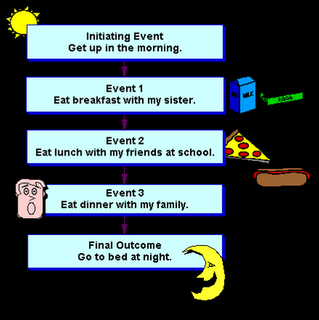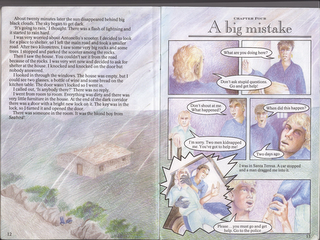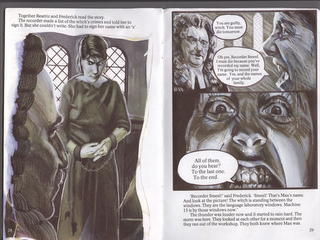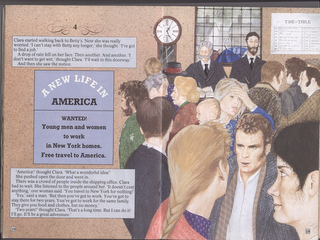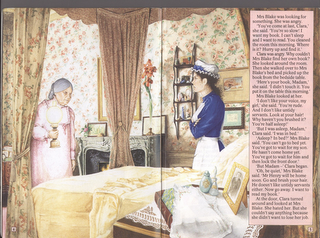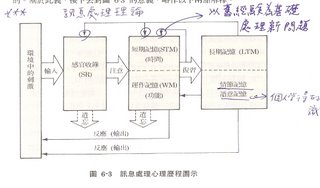Topic: In the Future, Using Graphic Novels as Reading Prompts to 11-to-13-year olds in Taiwan
I. Abstract
II. Introduction
A. Study Motive
Since English ability has turned out to be the necessary in this society, learning English becomes the mainstream for people in Taiwan, especially students in early ages. A great many consider that the earlier the greater for students to exposure under the whole English environment. However, with this imperfect and contentious point of veiw, double-peak phenomenon has arisen in students' English aility-for those who study English well, they really get to learn a lot, conversely, those who study less will usually end up learning nothing-especially at high-grade students. Therefore, how can the instructors re-build low-achievement students' interest in learning English, and at the same time think in terms of those who are at the top of the class is the crux of the matter.
In English learning, reading and writing among the four basic English skills are usually more difficult for juvenile. Once they encounter this, they are grouped in remedial classess, spending countless hours drilling in worksheet and exercises. Yet as Gallego and Hollingsworth remind us, these intervention programs fail to recognize the multiple literacies that the students possess (Nancy & Douglas, 2004). It is imperative to use popular culture to build on students' multiple literacies (Alvermann, Moon, and Hagood, 1999). And here picture storybooks and graphic novels are the best examples which the researcher is going to delve into for they are novel to most instructors, particularly graphic novels.
B. The purpose of this study
There are four purposes to achieve for this study:
1. To delve into graphic novels/graphic novel instruction in circulation in the United States, and picture storybook/picture storybook instruction in circulation in Taiwan.
2. To reorganize these two genres' similarity and differences among the format, content, and characteristics.
3. To combine these two genres' pedagogical curriculum gist into a new instructional guidence for instructors in teaching reading in English.
4. To discuss how the instructors in Taiwan apply prevailing experience on picture storybook instruction to teaching reading in English, using graphic novels as reading prompts.
C. Definition of The Terms
1. Graphic Organzier
In graphic novels, people use lots of graphic organizers to have the readers comprehend the plot more clearly. In order to have a better understanding of graphic organizer, first to comprehend the word "graphic" is a must. According to Longman Dictionary of Contemporary English (English-Chinese), "graphic" means a very clear description of an event that gives a lot of details or a tool of constructing knowledge and organizing information. We may infer from the explanation above that the function of graphic organizer is to change the disjointed information into a structured, simple-to-read, and simple-to understand manner. In educational field, a graphic organizer is an instructional tool used in writing and reading, illustrated a student or class's prior knowledge about a topic or section of text (North Central Regional Educational Library) . Since it gives students an increased understanding and insight into the topic at hand, graphic organizers also direct at concept maps, entity relationship charts, and mind maps.
2. Graphic Novels
According to Wikipedia, Graphic novel is a long-form work in the comics form, usually with lengthy and complex storylines, and often aimed at mature audiences. The advantages of using graphic novel across the curriculum are as following (Gretchen, 2002) :
a. Graphic novels offer value, variety, and a new medium for literacy taht acknowledges the impact of visuals.
b. Graphic novels may inspire writing assignment.
c. Social studies is the area in which graphic novel brings new life beyond bland textbooks.
d. In any subject area, studying a graphic novel can bring media literacy into the curriculum as students examine the medium itself.
e. Lavin (1998) suggested that reading graphic novels may require more complex cognitive skills than the reading of text alone.
3. Graphic Novel Instruction
Using a think-aloud technique (Oster 65)
4.. Picture Storybooks
Picture storybook is a book in which a story is told through both the words and pictures. Text and illustration occur with equal frequency in these books. (Carol & Carl, 2005)
5. Picture Storybook Instruction
Using a read-aloud technique (Barrentine, 1996)
D. Study Scope
1. Students at High Grade or above
III. Literature Review and Status Analysis
In the last decade, graphic novels have been so popular with middle and high school students in the United States. These novel-length books feature text written in speech bubbles or as captions in comic book-like illustrations (Carol & Carl, 2005). And reluctant readers expecially enjoy having these books as a reading option (Carol & Carl, 2005). This is the excellent opportunity with which Taiwanese intructors to consult and re-view the educational field in English. Along with the score distribution, the numbers of student who are under 100 occupy three percent, and those who are under 88 occupy twenty five percent, particularly in English and mathematics . This againg states the fact that the proportion of underachievement does not decrease after the Grade 1-9 Curriculum.
Jean Piaget, after his long-time observation, children in 7~11 or above 11 are in concrete operational stage and in formal operational stage. To apply Piaget's cognitive-developmental theory to development of cognitive representation announced by Professor Bruner, in Harvor University, we may find out that children of elementary-grade or above it are in iconic representation and symbolic representation. In other words, 7- to 11-year-olds are able to read and are encourage to read graphic novels for they are ready for the great variety of literature that awaits them. Since children in these stages can acquire konwledge by pictures, shapes or memories to object perception which stays in their mental image, and even they utilize symbol and language in literature to pursue their knowledge.
Hence, providing graphic novels for juvenile to read timely is quite imperative for children who have had the benefit of a rich literature experience will become fluent and willing readers. (Carol & Carl, 2005)
A. Graphic Novels in Circulation in the United States
B. Picture Storybooks in Circulation in Taiwan
C. The Comparison and Contrast of Graphic Novels and Picture Storybooks among Formate, Content, and Characteristics
D. Children Reading Behavior
IV. Research Method
A. Interviewee
1. Participant
2. Instrument
3. The way of data collection
B. Documentary Analysis
V. Result and Discussion
A. In The Future, How Do Instructors in Taiwan Apply Picture Storybook Instruction To Teach Reading in English, using Graphic Novels as reading prompts.
VI. Conclusion
VII. Reference
Alvermann, D. E., Jennifer, S. M., & Margaret, C. H. (1999). Popular Culture in the Classroom: Teaching and Researching Critical Media Literacy. Newark: Internatl. Reading Assn. & Natl. Reading Conf.
Barrentine, S. J. (1996). Engaging with reading through interactive read-alouds. The Reading Teacher, 50, 36-43.
Carol, L. B., & Carl , M. T. (2005). Essentials of CHILDREN'S LITERATURE (Rev. 5th ed.) The United States of America: Boston.
Gretchen, E. S. (2002). Graphic Novels for Multiple Literacies. Journal of Adolescent & Adult Literacy, Vol . 46 .
Juel, C. (1988). Learning to read and write: A longitudinal study of 54 children fromfirst through fourth grades. Journal of Educational Psychology, 80(4), 437-447.
Lavin, M. R. (1998). Comic books and graphic novels for libraries: What to buy. Serials Review, 24(2), 31-46.
Nancy F., & Douglas F.(2004). Using Graphic Novels, Anime, and the Internet in an Urban High School. English Journal , Vol . 93 , No . 3.
Oster & Leslie. (2001). "Using the Think-Aloud for Reading Instruction." The Reading Teacher 55.1: 64-69.
VII. Appendix


